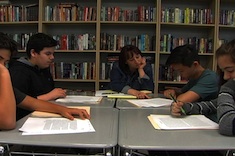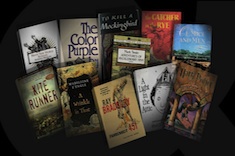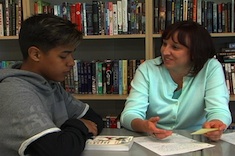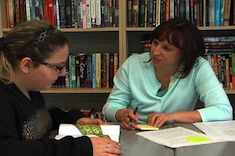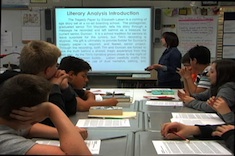I was walking around the classroom with my clipboard, listening in on book club discussions, and heard Megan say to one of her eighth-grade classmates, “Eat my shorts,” before bursting...
Membership Required
The rest of this content is restricted to Choice Literacy members.
Join us today for instant access and member-only features:
Articles
Get full access to all Choice Literacy article content
Videos
Get full access to all Choice Literacy video content
Product Discounts
Receive members-only product discounts for online courses, DVDs, books and more
Membership Options

